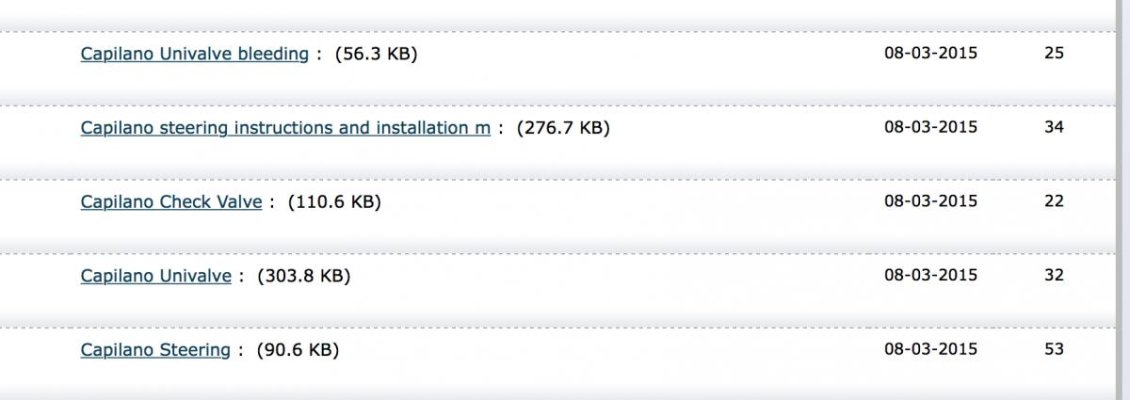I redid mine a long time ago now. I too have the Wagner pumps with the Uniflow valve.
I had some repairs to be done, leaking and cracked flare fittings, kinked copper tubing, leaking and bypassing cylinder so all the oil was drained.
To refill and purge:
I fitted my top [bridge] pump with a fitting for a 1/4ID hose and lead that to a one gallon fuel jug about 1/2 filled with the oil I was using, Dexron ATF.
Air in the system will be forced out as you turn the wheel which pushes oil ahead of it. When it reaches the top pump it will blow the oil all over the place creating a big mess unless lead to the jug. NO, a tray/pan will not likely work.
The hose to the jug stops this. THe air bubbles now have a place to blow out without spraying the deck.
Just be sure the hose cannot jump out of the jug or come off the fittings at the pump.
Also when you reverse direction of the wheel the hose will feed/suck oil into the pump when turning the other direction. It took a lot of cranking of course but I eventually got it working.
No need to constantly check the oil level in the upper pump. You will have to check the oil level in the jug.
It sure cut down on the upper pump refilling. Without the jug I would to often not check enough and suck in more air defeating the purpose.
After about every 20 -30 turns of the upper pump I would go down and crank the lower helm a bunch of times to ensure it was filled and working.
How is the cylinder mounted? If like mine the cylinder oil ports face downwards remove the cylinder and lay it in the bilge so the oil ports face upwards. Otherwise air will get stuck in the cylinder and not all of it will exit.
My ports are fed by hydraulic hose with some flexibilty, a pain but workable.
THen with the Uniflow bleed ports slightly open no air will re enter the cylinder as you continue to purge and refill the system.
THere are two bypass screws on that Uniflow valve, one at each end which should be unscrewed SLIGHTLY, Maybe 1/2 turn. I would also replace the O rings as the old ones may have hardened and no longer seal properly once disturbed.
THose screws allow the oil to bypass the cylinder and vent/drain air directly to the center return hose.
Remount the cylinder once the air has been purged from the system and oil refilled.
THere may still be a small amount of air in the overall system but a couple of runs and some pitching and rolling will purge the remainder. Just remember to check the upper pump fill and top up as needed.
If you lost the oil then it had to go somewhere. Slow weeps can allow the upper pump level to drop enough for your steering to suck in air. You must check periodically for the level in that upper pump and maintain the level so the pump itself is covered in oil. If allowed to drop and expose the pump part the system will suck in air.
To check for weeps looking may not be enough. I use the blue Scot paper shop towels as even tiny amounts of wetness will show dark , a distinct colour change that a white towel won't.
Often the oil coating will be so thin or light that it is not easily visible.
Wipe ALL fittings in the system with those towels and examine closely for any sign of oil, colour change. Ignore no fittings. THe oil may drop out of sight and not show.
Wrap the fittings with those towels if need be. Even tiny leaks will likely be exposed. Even those tiny leaks can allow oil to escape and maybe allow air to be sucked into the lines.

 . Seee attached screenshot as to what I uploaded............
. Seee attached screenshot as to what I uploaded............